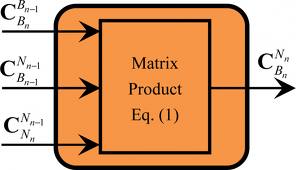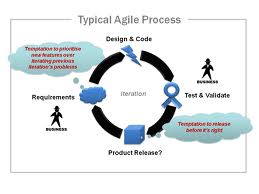If you would like to become a Certified Systems Engineering Professional, ATI is here to help you.
ATI is now offering a dynamic four-day Instructor-led course that covers all the latest CSEP v5.0 requirements in the July 2023 version of the INCOSE Handbook and covers all the material that might be on the CSEP/ASEP Knowledge Exam. The INCOSE Certified Systems Engineering Professional (CSEP) certification is a useful and coveted milestone in the career of a Systems Engineer, demonstrating knowledge, education and experience that is of high value to industry and systems organizations. This Course and certification process requires passing an extensive examination based on the INCOSE Systems Engineering Handbook v5.0 (July 2023), interactive work, study plans, patented study aids, and sample knowledge examination questions to help you prepare effectively for the exam. Secondarily, this course also covers the major changes in SE terminology, practice, and processes since the last 2015 SE v4.0 handbook revision. Finally, this course covers all the latest industry accepted Systems Engineering processes best practices guaranteed to make you and your company better Systems Engineers … all while working with today’s levels of complexity, ambiguity, volatility, and uncertainty.
ATI combines our proven SEH method and 60+ years of industry experience to ensure that you will not only pass the exam, but have an in-depth understanding of the entire System Engineering process. Our instructors are program certified and provide hands-on assistance with your application from beginning to end. Our program also includes an extensive test bank to ensure that you are prepared for more than just the Knowledge Exam. We are so confident in our method that if you do not receive your certification after taking this course, submitting your Application and taking the Knowledge Exam, our Instructors will meet with you, complete a customized content review and we will immediately enroll you in the next offering at no additional cost.
You Receive as Part of this Course:
Personal copy of the INCOSE Systems Engineering Handbook, Rev. 5.
Our patented ATI participant Course Manual, with newly added SE Handbook Rev. 5 materials to the existing highly regarded INCOSE ATI CSEP Rev 4. Student Guide. This manual contains not only a copy of the slides presented during the course, but also a vast amount of Instructor led insights, notes and experience to reinforce specifically what is being taught in the Rev. 5 Handbook.
Instruction and tips on how to fill out your application and reference for success. Personal, Instructor-led, guidance on submitting your INCOSE CSEP Application and Letter of Reference using proven first-pass success techniques. This instruction is provided by ATI Instructors that have served as INCOSE volunteers to review & approve applications, so ATI understands and knows exactly what your INCOSE Application Reviewer is looking for.
Personal self-evaluation questionnaire to provide you laser focus on which areas require additional study and which areas you already understand.
Personalized, Instructor-led, guidance for study planning.
An “After Class Knowledge Exam Preparation” Course module sharing effective & ineffective study and exam taking techniques showing you the existing v5.0 knowledge computer exam format and layout.
Personalized Instructor-led Knowledge Examination test taking strategies from INCOSE CSEP’s that have actually taken the Knowledge Exam and have volunteered with INCOSE to write and approve actual INCOSE Knowledge Exam questions.
Three partial and full-length sample Knowledge Examinations, written by Instructors that are themselves INCOSE CSEP’s that have actually taken the Exam and have volunteered with INCOSE to write and approve actual knowledge exam questions, and how to use each of the Knowledge Exams in your study and knowledge domain preparation to assess your readiness. Note – these ATI Sample Exams are not actual INCOSE CSEP Knowledge Exam questions.
Instructors that are with you through the entire process, including up to, through and after passing the Knowledge Exam. Instructors provide their personal email and mobile phone number and are available after your 4-Day Course through passing the Knowledge Exam … guaranteed!
No pre-course preparation is required to pass the Knowledge Exam, first-time. After you complete this 4-Day Boot-Camp and your personalized Study Play you will be ready to implement your personalized study plan and then to take and pass the CSEP/ACEP Knowledge Exam. This course is available as a private onsite only and ATI guarantees you will pass.
What You Will Learn:
How to pass the CSEP examination!
Details of the INCOSE Handbook, the source for the exam.
Your own strengths and weaknesses, to target your study.
The key processes and definitions in the INCOSE language of the exam.
ATI’s patented complete “Process-On-A-Page” Study Guide to make recalling each of the processes, their inputs and outputs and their controls and enablers easy to remember and recall during the Knowledge Exam.
How to tailor the INCOSE processes.
ATI’s proven Five Rules for Test-Taking.
ATI’s proven rules on How to Prepare and How Not To Prepare.
You will develop a trusted and personal relationship with your individual Instructor that will guide you through preparing for, taking/passing the exam, maintaining your certification through Continuing Education best practices and welcoming you into the coveted certified membership of INCOSE Certified Systems Engineering Professionals as you grow into your CSEP/ASEP SE role. Equally as important, you will learn the latest SE terminology, practice, and processes to be a better Engineer … GUARANTEED.
OK, Enough of the sales pitch. So, what will your next step be?
If you are ready to enroll in the course, you can go here, and register to attend the CSEP Preparation Class.
If you are not quite sure yet, and you would like to attend a free one-hour webinar to learn more about the course, you can go here, and register to attend the free webinar where you will meet one of the instructors and learn more about the course. After attending this free session, we think you will be ready to enroll, but feel free to attend even if you don’t plan on taking the course; hopefully you will learn something.
Lastly, if you have any questions about this course, or any other ATI courses, please feel free to reach out to us at the email addresses or phone numbers listed at www.aticourses.com




 Video Clip:
Video Clip: 


 C. O. T. S. = Commercial Off-the-Shelf
C. O. T. S. = Commercial Off-the-Shelf

 What Resolutions Have You Made?
What Resolutions Have You Made?

 At ATI, the course IS the Bomb!!!
At ATI, the course IS the Bomb!!!